walking
Latest

Wandercraft's latest exoskeleton lets paraplegics walk with a more natural gait
Paris-based Wandercraft has announced that it's latest exoskeleton now gives patients a more natural gait during rehabilitation exercises.

Apple's Time to Walk feature will offer inspiring stories to Fitness+ subscribers
Apple could soon launch a podcast-like feature called “Time to Walk” for Fitness+ subscribers and Watch owners.
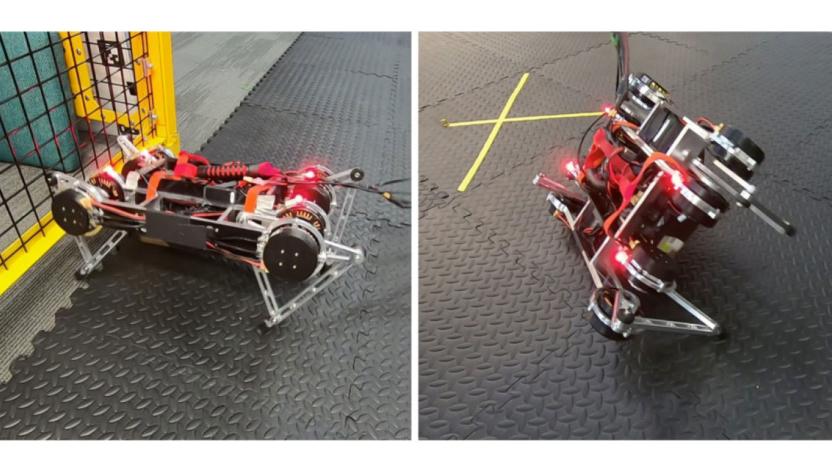
Google algorithm lets robots teach themselves to walk
There's no question that robots will play an increasingly central role in our lives in the future, but to get to a stage where they can be genuinely useful there are still a number of challenges to be overcome -- including navigation without human intervention. Yes, we're at a stage where algorithms will allow a robot to learn how to move around, but the process is convoluted and requires a lot of human input, either in picking up the robot when it falls over, or moving it back into its training space if it wanders off. But new research from Google could make this learning process a lot more straightforward.

Google Maps may soon highlight well-lit streets for walkers
Google Maps is great for getting directions while driving and using public transport, but in the last year it has been rolling out more features focused on traveling by foot as well. Recently, the company introduced AR walking directions and detailed spoken walking directions for people with vision impairments. In the future, Google may be adding a new feature to help people find safer streets to walk at night.
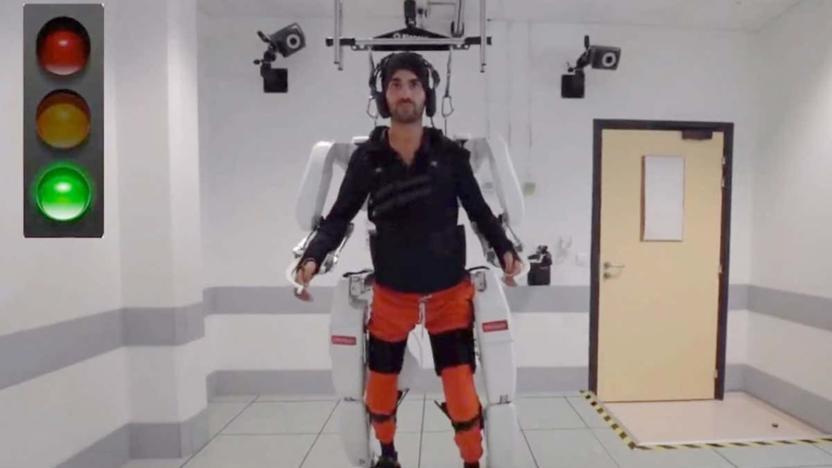
A mind-controlled exoskeleton helped a paralyzed man walk again
A paralyzed man regained the ability to walk with the help of a robotic exoskeleton that he controlled with his mind. Unlike other, more invasive mind-controlled robotics, this one used electrodes implanted above the brain's outer membrane, not in the brain itself. That could reduce the risk of infection and other obstacles that have limited the success of mind-controlled robotics.
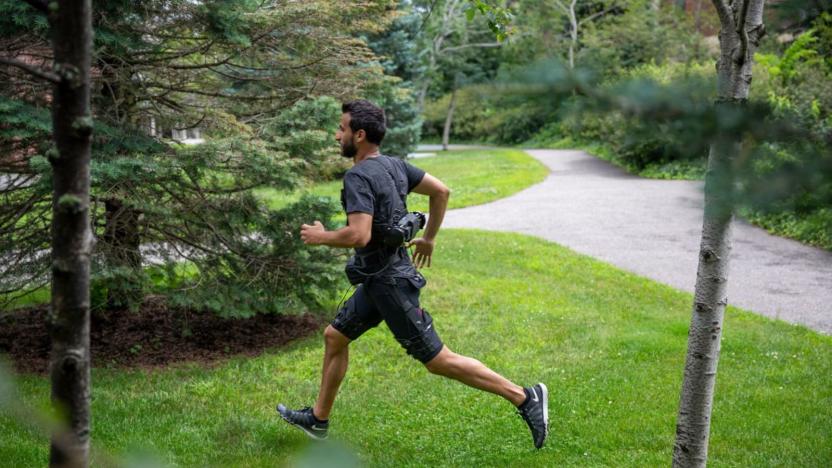
This hip-hugging exosuit uses AI to make walking and running easier
Robotic devices have been used to help people walk or run in rehabilitation settings, but until now, they've been tethered and limited to a single action, like walking or running. In a paper published in Science today, a team of researchers explain how they're going to change that. The researchers -- from Harvard University and the University of Nebraska Omaha -- have developed a portable exosuit that uses AI to assist users with both walking and running.

Wandercraft's exoskeleton was made to help paraplegics walk
There's a reason you've never seen fully autonomous exoskeletons that help the disabled walk without crutches: Building one is crazy hard. But the founders of a Paris-based startup called Wandercraft are uniquely qualified to do it. They're roboticists who happen to have loved ones in wheelchairs, giving them both the expertise and motivation to develop an exoskeleton that helps users walk again. After years of development, they're nearly ready to show it to the public, following a round of promising patient trials.
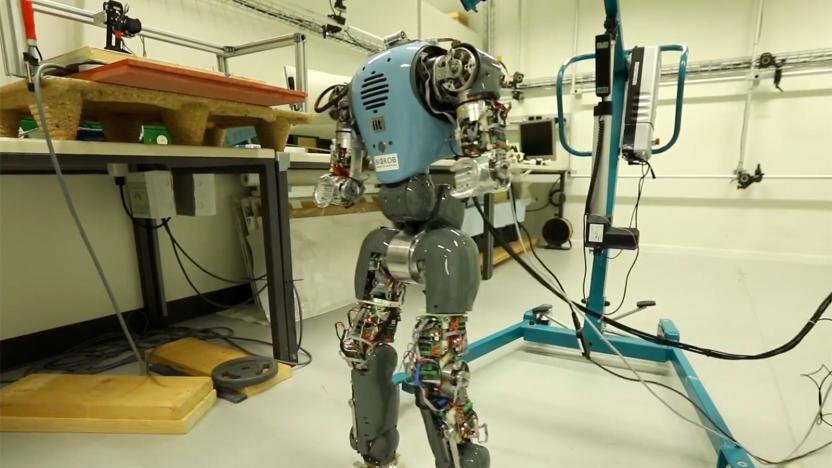
Robots learn to walk naturally by understanding their bodies
The challenge with bipedal robots isn't so much getting them to walk at all (although that's sometimes a problem) as it is getting them to walk naturally. They tend to either step cautiously or quickly run into trouble. Swiss researchers think they can do better, though: they're working on COMAN (Compliant Humanoid), a headless robot designed to master walking. The automaton is more graceful through a combination of more flexible, elastic joints and a control algorithm that helps the bot understand its own body.

Walking ‘Silent Streets’ makes for a sinister but short adventure
My friends, who knew of my uncharacteristic love for Pokémon Go, suggested that I try Silent Streets. It's a brand-new mobile game that combines the same mechanics of augmented reality and walking that I enjoy so much. There's no magical critter-catching going in Silent Streets. It's a Victorian gothic detective story that sees you roaming your local area to solve a murder -- one that had me walking around trying to find "The Boy With the Flower Skin."

Hyundai wants to make exoskeletons cheaper
Exoskeletons are nothing new. You put one on and become a low-level Iron Man, able to lift items that would normally snap your spine. The drawback is they can be prohibitively expensive, but Hyundai thinks it can lower the cost of these exosuits that not only give us the ability to lift more, but can also help disabled people walk once again.

I've accidentally joined the cult of Pokémon
Pokémon passed me by when it arrived in the UK back in 1999, and I've never been a fan. The way my friends were suddenly gripped by its cult-like lure made it seem like the worst thing ever. In my mind, 15-year-olds shouldn't be hunched over their Game Boy Colors; they should be trying (and failing) to talk to girls. I also objected to the title on moral grounds, since it glorifies blood sports like dogfighting for an audience that isn't old enough to appreciate nuance. My stance between the ages of 15 and 30 was simple: Fuck Pokémon. That's why it's so galling that I spent last weekend roaming the city for Pokéballs. Thanks to Pokémon Go, I've become everything that I hate.
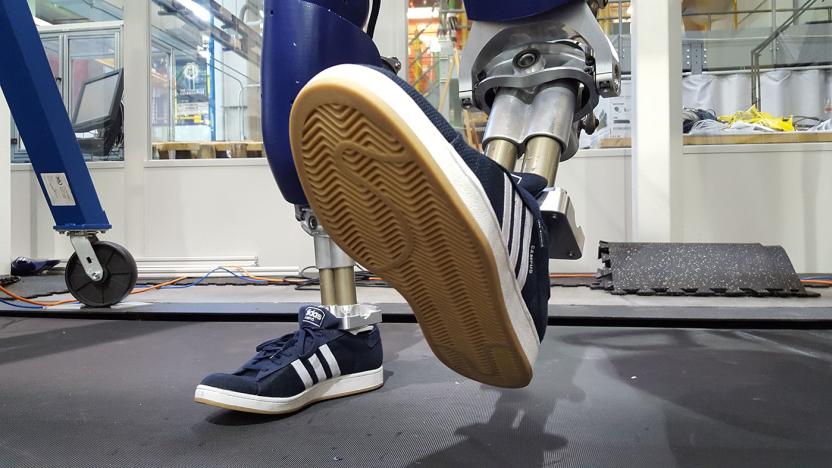
Georgia Tech's DURUS robot has a more natural human-like stride
Last time we saw the DURUS robot walking like a human, it was still doing so relatively flat footed. The folks at Georgia Tech's AMBER-Lab have improved the robot's movements to incorporate even more human-like heel strikes and push-offs. As you can see in the video below, the new range of motion gives DURUS a more natural stride, and the ability to wear some sweet sneakers. Until about a week ago, the robot shuffled along flat footed before getting a pair of new metal feet with arches soles. After some tweaking of the algorithms and a few falls, DURUS now strides like the rest of us.

AMBER Lab robot jogs just like a human
Two-legged robots are nothing new, but usually we see them walking, not running around a test lab. A pair of seemingly autonomous legs that can lap you in the park is a scary thought, after all. Such images haven't stopped the Advanced Mechanical Bipedal Experimental Robotics (AMBER) Lab at the Georgia Institute of Technology, however. As its latest video proves, the team has built a bipedal droid that can jog at a pretty brisk pace. It's called the Durus-2D and, while maybe not the fastest human-style robot, impresses with a natural style and stride pattern.

Fist-bumping a button is the best way to cross the street
Tired of having to tap (or, let's be honest, mash) a boring old button to cross the street? Los Angeles artist Alfredo Adán certainly is. He recently created Walkbump, a project that covers crosswalk buttons with casts of a fist -- as you'd guess by the name, you have to fist-bump the button to signal your intentions. It's a "simple" hack (even if the construction process isn't), but it does add a friendly flair to your trip across the road. You're not so much telling the traffic light to change as asking it nicely. While this isn't as clever as some crosswalks, such as one that plays Pong, it does bring some much-needed humanity to the urban landscape.

This ultra-efficient robot walks just like people do
You don't have to worry about robots rising up against humanity anytime soon -- the bipedal ones, at least. When they aren't constantly falling down, two-legged robots are running down their power supplies due to inefficient gaits and wasted motion. During a recent DARPA competition, teams from Sandia National Labs and SRI International squared off to see whose robot could walk the furthest. SRI's robot, dubbed the "DURUS," won out by walking 2.05 kilometers in just over two and a half hours while using just 350 watts of power. For those of us who aren't electrical engineers, that's a really impressive feat. In fact, the DURUS uses up to 30 times less power than the ATLAS robot employed in the DARPA challenge.

These exoskeleton heels could help stroke victims walk again
It isn't quite the soft exosuit that DARPA's working on, but scientists have developed a lightweight exoskeleton that'll take some of the work out of walking. Before you get too excited though, this is less Edge of Tomorrow and more along the lines of mechanical engineering. Researchers from Carnegie Mellon and North Carolina State University devised a way to use springs and ratchets to fashion a sort of boot that increases walking efficiency by seven percent compared to folks wearing regular shoes. The idea is to make it easier for the disabled, paralyzed or stroke victims to improve their walking ability without expensive motors and battery packs.

Get motivated to get moving with Movn
Movn: Simple Pedometer & Movement Goal Coach wants to help you become more active. All of us have decided at some point to increase our daily activity by taking a long walk, or jogging, or riding a bicycle, or yoga, or any number of activities. But how many of us have failed to follow through and actually do more? Probably most of us. That is where Movn comes in. The free app works on all iPhones and 2nd generation iPads and later and requires iOS 7.1 or later. Movn works as a simple pedometer to count your steps by using the accelerometer and GPS in your iPhone. It also tracks how long you have been active so if you did a stationary warmup before starting your walk it measures that time too. Users indicate what activity they are participating in such as walking, jogging, swimming, cycling, or working out at the gym with weight or in an organized yoga or pilates class. Once you do that decide what your goal is for how long you want to be active during the day. The time ranges from thirty minutes to three hours. That's all you have to do. As long as you have your phone somewhere on your person Movn will track your activity time and count the number of steps you take. The app also gives you a map showing the path of your latest activity. I did some mall walking to test the app and even though I was inside the map showed a close up view of the mall and my path from one end of the mall to the other and back. So you are all set now. You have your goal and you know what you are going to do but you still need to follow through and get moving. The app offers a place where you can set up a notification in case you sit too long. Set a time and Movn notifies you that you have not been active for that long. It tells you politely that you have been sitting for more than whatever time you selected and you need to get going. The app keeps you engaged while you try to reach your goal with additional messages like park your car far away and walk or take the stairs. Once you reach your goal for the day, the app recognizes your achievement. Movn also records your daily activity and allows you to see how you have been doing over the last week or month. If you are really serious about getting into shape and workout regularly then Movn is probably not for you. You will find other apps that can provide more information besides just the number of steps and the time you were active. If you are just looking for a little push to get you going and keep your activity level at a higher level, then Movn might be just what you need.

TUAW at Macworld/iWorld 2014: Kamino
Kamino is a new free app that is making its debut at Macworld/iWorld 2014. Described as an "urban discovery app", the idea behind Kamino is that people who enjoy walking or hiking around their urban homes can capture those hikes and share them with others. If you're visiting a city on vacation or just want to learn more about your own surroundings, Kamino can help to provide you with some good walking ideas. We caught up with the Kamino team in the Appalooza area at Macworld/iWorld for a quick video interview about what the app does.

Swiss researchers created a cube that can sit, jump and walk (video)
Swiss researchers have created a metallic cube that can "walk" across a surface. Staff at the Federal Institute of Technology Zurich crammed a series of inertia sensors and constantly-spinning rotors (called reaction wheels) into a 15-centimeter cube, dubbed Cubli, that enable the contraption to move around on its own. When one or more of the weighted rotors abruptly stops spinning, the machine sort of jumps on its edge -- all thanks to centrifugal force. Once upended, the rotors act like a gyroscope to maintain Cubli's position. Halt another wheel and things get really crazy: the device defies gravity, tipping up and balancing on one of its eight corners. By repeating these motions in succession, the gizmo uses a series of controlled falls to slowly hop across a surface. In terms of practical applications, the Swiss researchers said this tech could aid in remote planetary exploration, possibly giving the Curiosity rover and its ilk some company. All noble goals, but for now the lab says that Cubli is just a high-tech toy. And that? That's perfectly fine.

AMBER robot walks on human-like feet but isn't quite ready for British Knights
Until recently, bipedal robots have sometimes had to take interesting approaches to imitate human walking because they lack our first points of contact with the road: heels and toes. The latest breakthrough from Texas A&M's Amber Lab robotics team may have fixed that, though. An approximation of those foot bones grants the robo-Manziel the pivot-points necessary for (somewhat) naturalistic locomotion. However, this advancement doesn't do nearly as much in terms of making the synthetic legs any stronger. Near the end of the embedded video, the disembodied legs stumble and fall to show that the attached boom isn't supporting their weight. This is great news for us meatbags, because it makes 2029 feel that much further away. Update: We received word from Texas A&M Amber Lab's Aaron Ames that the robot in fact supports its weight throughout the entire demo, and that the team purposely made it fall to show that the attached boom only provides lateral stability.












